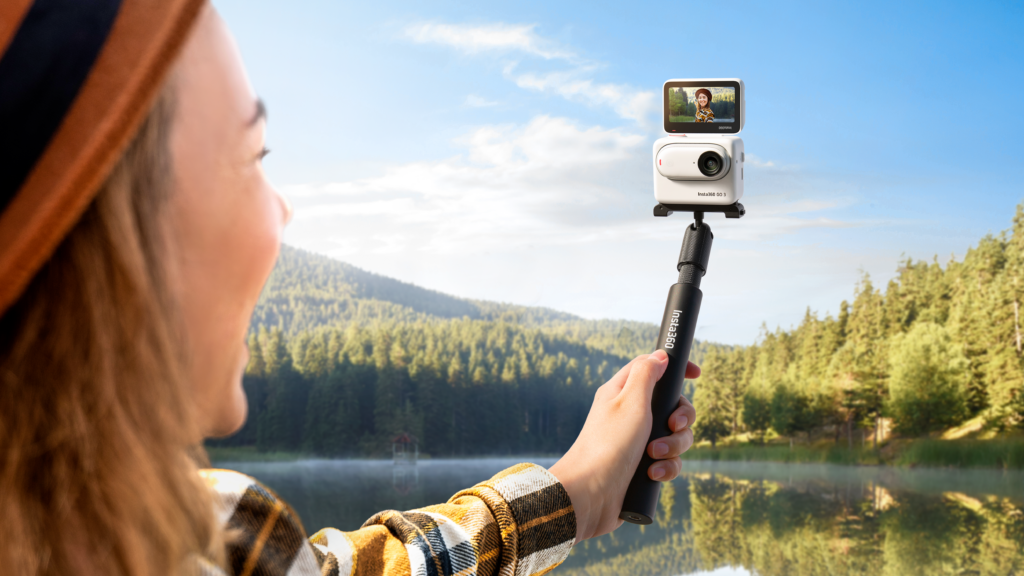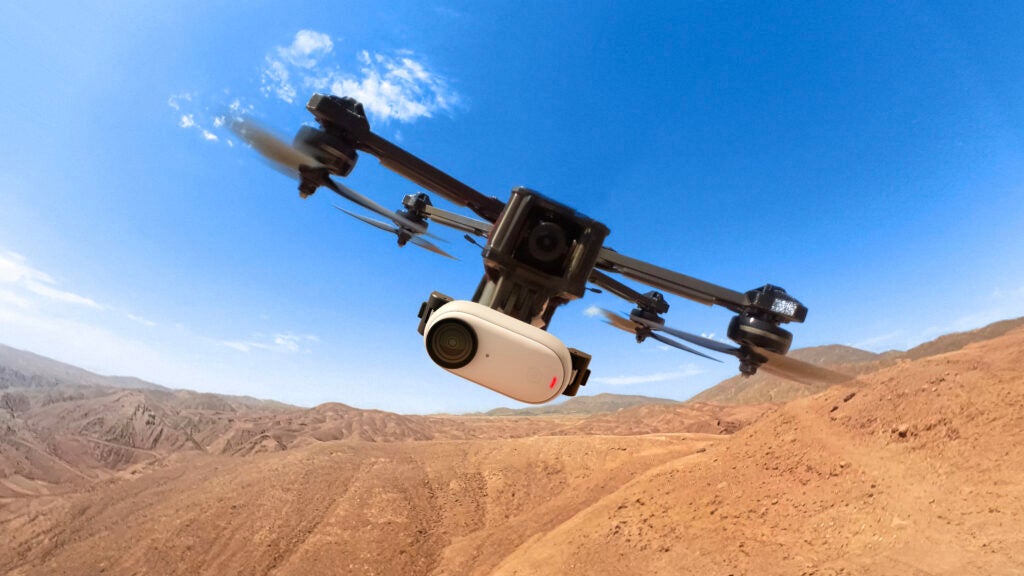Insta360 has unveiled its latest miniature action camera and there are few key changes with the updated device. Here’s all you need to know about the new Insta360 Go 3.
It’s been well over two years since the Insta360 Go 2 hit the scene and in that time, no company has really come out with its own thumb-sized mini camera to compete (unless you count the small-ish GoPro Hero 11 Mini). With no real competition in this sector however, Insta360 has taken its time in developing a successor and now that the curtain has been pulled back on the Insta360 Go 3, it’s clear that a great number of improvements have gone into the newer device.
In fact, there’s now an argument to be made that the Insta360 Go 3 has its sights set on competing with larger action cameras like the GoPro Hero 11 and even the company’s own modular-camera, the Insta360 One RS. Only time will tell if the Go 3 has what takes to compete with the major players but if you want to know what separates the new camera from the Go 2 then keep on reading.
Goodbye Charge Case, hello Action Pod
One of the big new additions to the Insta360 Go 2 was its portable Charge Case which not only topped up the Go 2’s battery but also operated like a miniature tripod as well as a remote control when needed. It seems as though the Charge Case wasn’t quite the game changer that Insta360 had hoped for as it’s now been supplanted by the all-new Action Pod.
This updated housing allows the Insta360 Go 3 to operate far more like a traditional action camera thanks to the oscillating screen that lets you see exactly what the Go 3 is filming, whether you’re behind the camera or in front of it.
The Action Pod also lets you change your settings quickly much like how you would on the Insta360 One RS, and now there’s no need to connect to your phone in order to playback any footage that you’ve just shot.

The Go 3 boasts 2.7K filming and an extra mic
One of the understandable setbacks (given its size) of the Insta360 Go 2 was that its video capture capped out at 1440p but this is no longer the case with the Go 3. For its latest camera, Insta360 has raised the resolution cap so that the Insta360 Go 3 can film in up to 2.7K resolution.
Of course, this doesn’t come close to the 5.3K cap of the GoPro Hero 11 or even the 6K ceiling on the Insta360 One RS 1-inch 360 Edition, but against the Go 2 it’s a huge improvement. This means that you’ll be able to capture more detailed footage in a pinch, which is particularly handy for mitigating any loss in quality when cropping video in the editing process.
Audio quality should also see a notable improvement with the Go 3 now boasting two microphones (as opposed to just the one on the Go 2). On paper, this should allow the Go 3 to better hone in on any dialogue in your footage, but we won’t know the full extent of the upgrade until our final review.
New recording modes
Several filming modes from the Go 2 have made the jump to the newer hardware, including TimeLapse, TimeShift and Slow Motion, but some new additions have made the cut that should allow users to make the most out of the Go 3.
One of the new modes is Timed Capture which lets you instruct the Go 3 to start filming at a specific time of day, so if you want to capture a sunrise without having to get up at a ridiculous hour then you can set the Go 3 to start the filming process all on its own.
Pre-recording and Loop Recording are also being added, the latter of which is handy if you’re waiting for an event to occur but you don’t want to be left with a sizable video file at the end that just eats into the Go 3’s internal memory and is difficult to share thereafter.

The Go 3 can last longer without heating up
Battery life has been given a major boost on the Insta360 Go 3, with the device able to last for up to 45 minutes by itself on a single charge, or up to 170 minutes when cradled by the Action Pod. That’s a notable markup on the Insta360 Go 2’s 30 minute duration and the extended 150 minute ceiling with the Charge Case attached.
This is a huge boon for content creators as it should allow you to get more footage in a single day without needing to run for the nearest power outlet or battery pack to top-up. Insta360 has also addressed the heat dissipation issues that plagued the Go 2.
As any user of the Go 2 can attest, the device ran pretty hot after a short period of time, which also meant that the camera had max video lengths built into the software. This time around Insta360 claims that the heat dissipation issues have been fixed which also means that the caps on filming lengths have been removed.
The Go 3 doesn’t come cheap
Based on these specs, the Insta360 Go 3 is marked improvement over its predecessor, but all of those updates come at a price. The Insta360 Go 2 came in two storage options, 32GB and 64GB which cost £294.99/$299.99 and £324.99/$329.99 respectively.
By comparison, the Insta360 Go 3 comes in three options, 32GB ($379.99), 64GB ($399.99) and 128GB (£429.99), and with a higher entry-level price to boot. With the 128GB model, the Insta360 Go 3 won’t be too far off the price of some GoPro cameras, so Go 2 owners will have to weigh that up when deciding if they want to upgrade.




